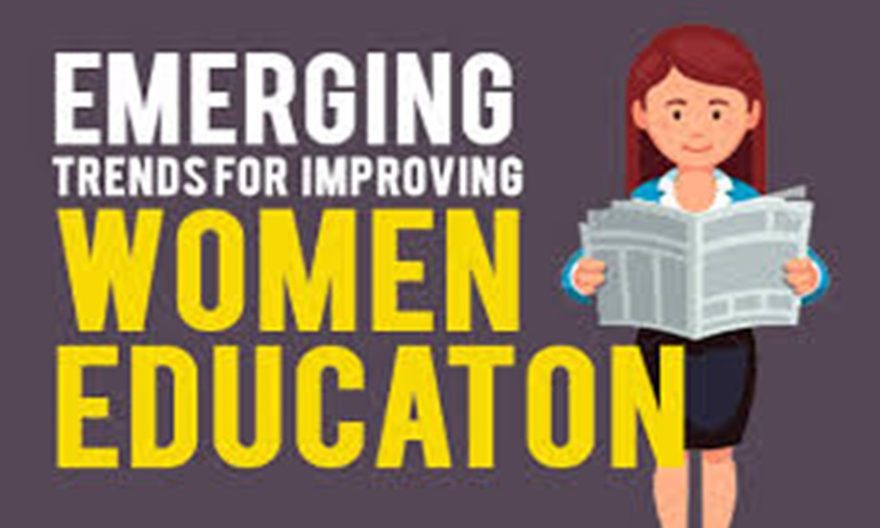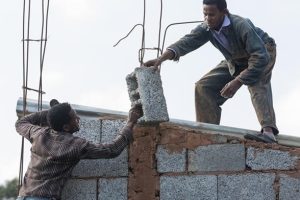
It is quite obvious that educated women and girls would play a paramount role in fostering sustainable development across the nation apart from employing men’s capacity and educational qualification so the saying goes, “a single-handed clap gives no sound.”
Having in mind the decisive role of women and girls education in mind, The Ethiopian Herald approached Samrawit Multeta, a gender expert, to solicit professional information about women’s development role.
She said, “Raising the education levels and literacy rates of women is one of the most effective investments for increasing female productivity on top of enhancing the well-being of families. In developing countries like ours, reducing gender inequality in literacy and in primary, secondary and management education is essential to reducing poverty and accelerating sustainable economic development.”
True, as to her, girls now tend to do better at school than boys in almost civilized areas. The gender differential is particularly large in educationally backward, traditionally captured and under developed localities of the developing world. Educated women provide plan-document to be used for physical development of the human habitat. Therefore, the presence of educated women is needed to play as a system for environmental development furthermore sustainable development.The socioeconomic impact of female education constitutes a significant area of research within international development. An increase in the amount of female education in various nations tends to correlate with high levels of development. Some of the effects are related to economic development.
She said, “Generally boys and girls assume different gender roles, and that, compared with single-sex schools, mixed comprehensives provide more opportunities for children and teenagers to understand gender identity and related modes of thinking, which will help naturalize communications between the sexes.
“Education is the greatest advantage citizens can share with the next generation. It is known that educating young women offers them the chance to be self-sufficient, create an income stream, be a positive part of their community, a greater benefit to their families and an inspiration for their future children,’ she said.
The women’s perspective be taken as the reference point for evaluating the effectiveness of educational policies, programs and projects. Empowerment through education is ideally seen as a continuous holistic process with cognitive, psychological, economic and political dimensions in order to achieve emancipation. Given the complexity of political, societal and international interrelations, one has to systematically think about the strategies and concrete proposals for future action if one hopes to achieve such a goal.
Typically, the gender gap between the education levels of boys and girls and not simply the level of women’s education. This helps to distinguish the specific effects of women’s education from the benefits of education in general.
The most common way to measure economic development is to look at changes in growth of GDP. The benefits of education to an individual can also be analyzed by finding the cost of education and the amount of income that would have been earned during years enrolled in school. In addition to total economic growth, women’s education also increases the equitability of the distribution of wealth in a society. Increased women’s education is important for achieving goals targeting empowering disadvantaged groups.
She further said that women’s education leads to significant social development. Some of the most notable social benefits include decreased fertility rates and lower infant mortality rates, and lower maternal mortality rates. Closing the gender gap in education also increases gender equality, which is considered important both in itself and because it ensures equal rights and opportunities for people regardless of gender.
True, she said, educated women are more likely to engage in civic participation and attend political meetings, and there are several instances in which educated women in the developing world were able to secure benefits for themselves through political movements. Basically, investing in women’s education has a higher overall return when looking at all levels of education; through primary school investing in men has a higher rate of return.
In principle, she said education is considered as a significant instrument in improving the status of women. The policy makers have recognized that, apart from the corrective legislations lucrative employment, political rights, access to education for women is a crucial step in the direction of establishing gender equality.
“Education is a major instrument of social change because it has led the nation towards development. Here, development in the political, economic, social, educational, cultural and other dissentions of human life, but women’s development should not only be viewed as an issue in social development. Education is the only tool which aims at making human beings honorable citizens than merely a virtuous and learned person. Empowerment of women for development is considered as the surest way of ensuring socio-economic progress,” she said.
As to Samrawit, education is very essential for both gender which decides the social or cultural behaviors, decision making and mental grooming of an individual. Certain instances of education to women in developing countries like Ethiopia are denied due to gender inequality. Mental and physical barrier acts as the block to the development of women in such societies. Though women were given with high profile and portrayed theoretically, psychologically they are treated unequally by male and female in many societies. A country can develop and achieve its maximum only when all are given with equal priority and importance. Any development needs to start from its bottom. Still several measures need to be taken to endure girl child development.
She added that educating women is critical input for improving nutritional levels, rising the age of marriage, acceptance of family planning, improvement in self image and their empowerment. These factors would help the women improve their status in the society. In order to improve the educational levels of women, several provisions have to be made, like the curricula at the school and college level should be revised to remove sex bias.”
It is obvious that educated man and women are a key for sustainable development of the nation. Besides, raising the education levels, literacy rates of women is one of the most effective investments for increasing female productivity on top of enhancing the well-being of families. In Ethiopia, reducing gender inequality in literacy and in primary, secondary and management education is essential to reducing poverty and accelerating sustainable development. The educational gender gap in favor of women starts young in some of restricted areas.
She said, “Human capital development fosters technological innovation through cognitive skills and enhances labor earnings and productivity, which stimulates economic growth and development. Hence, there is a need for all nations to fortify their citizens educationally regardless of gender for sustainable growth and development.”
She said mothers who are educated are more likely to educate their children and lesser cost incurred by environmental degradation therefore one has to make sure that women get equal share of benefit from the trends of education. In all trends of education, especially girl’s education shows that girls have always been in disadvantageous position in terms of access to and success in education.
Women who fend for themselves or participate actively in economic activities considered for men are often times seen as odd. According to her, this cultural orientation creates an enabling environment for women to be marginalized and denied access to education.
True women are beginning to break barriers and significant proportions of them now enroll in schools and engage in economic activities. This could be because of some policies introduced to encourage women education.
In a nutshell, it is argued Ethiopia that more educated women often challenge their husbands and leave their responsibilities at home in the hands of help while participating in economic activities. Making sure all girls are finishing secondary education could boost the gross domestic product (GDP) of the country. As eradicating barriers to women and girls’ education and development may hold the key to achieving many of Sustainable Development Goals, Ethiopia and other developing countries have to well capitalize on women and girls’ education.
BY MENGESHA AMARE
The Ethiopian Herald April 14/2024





